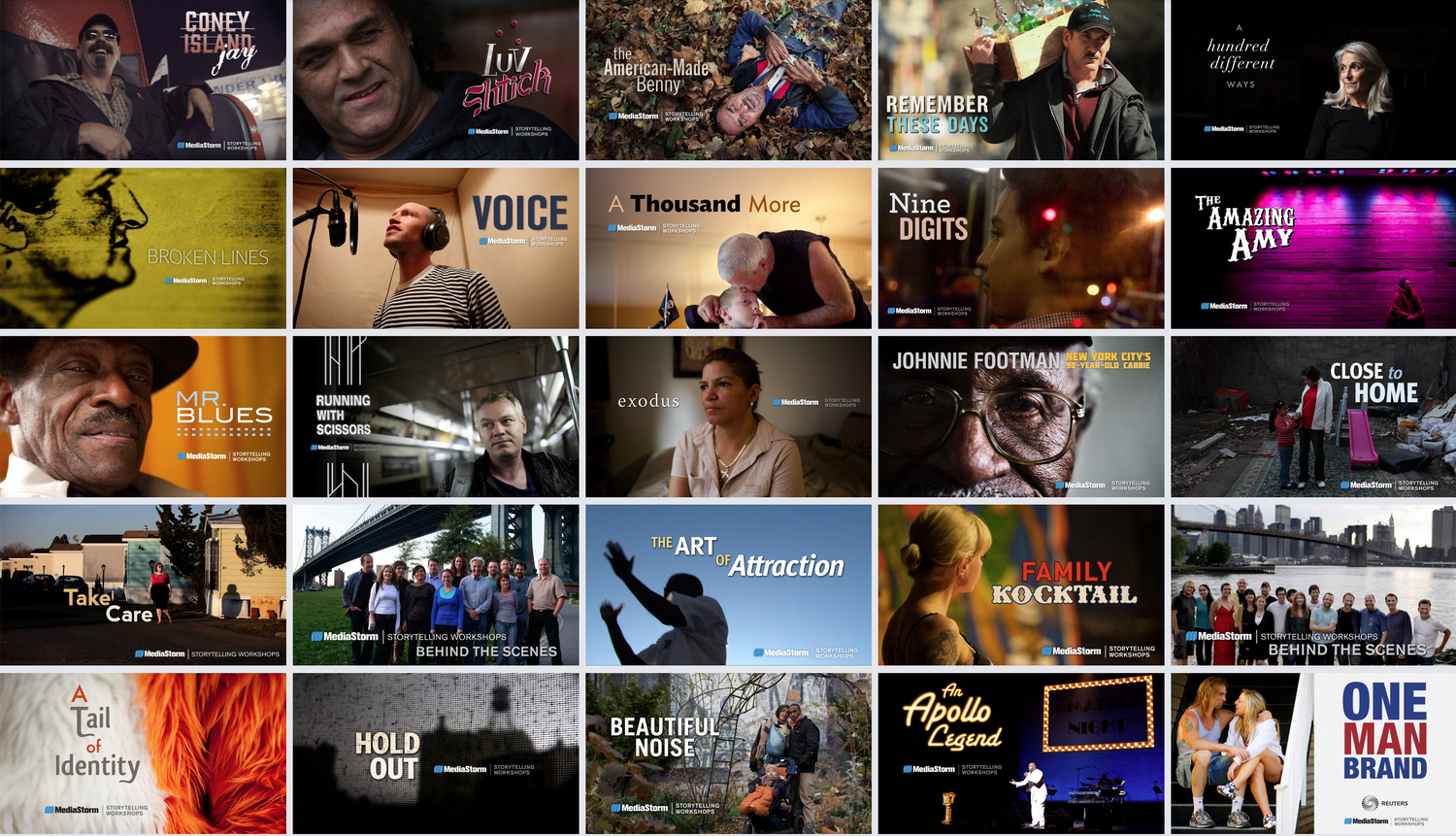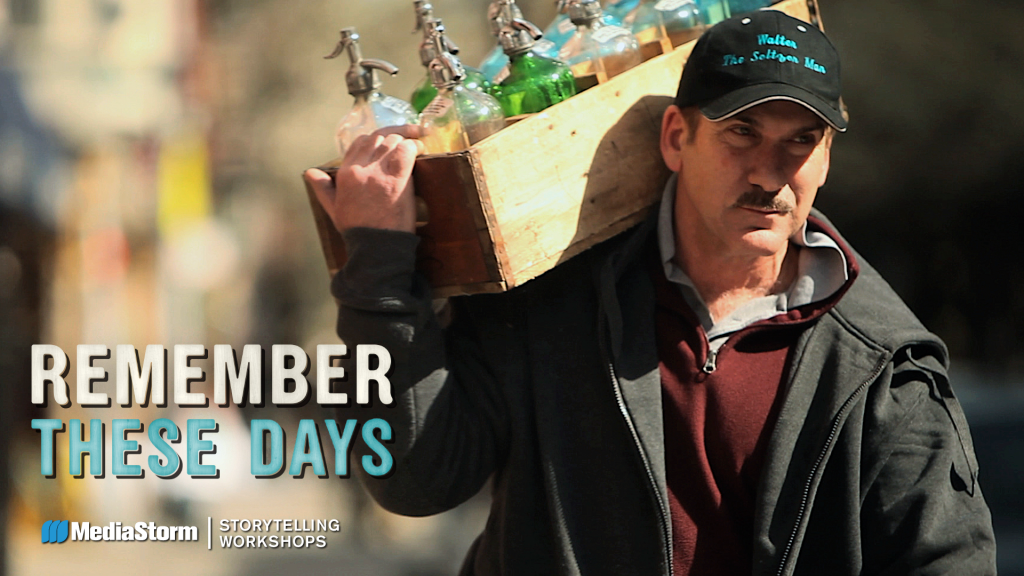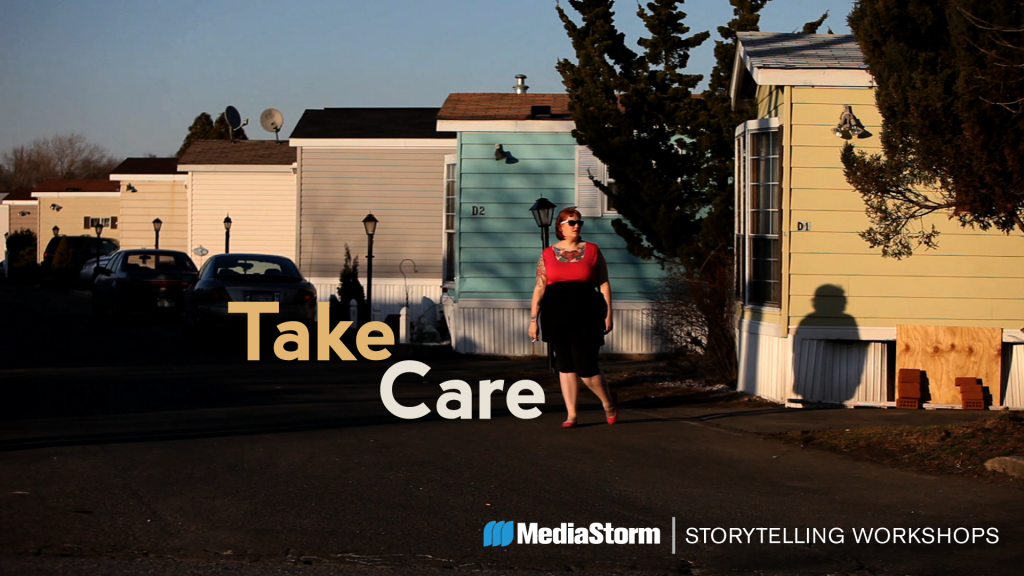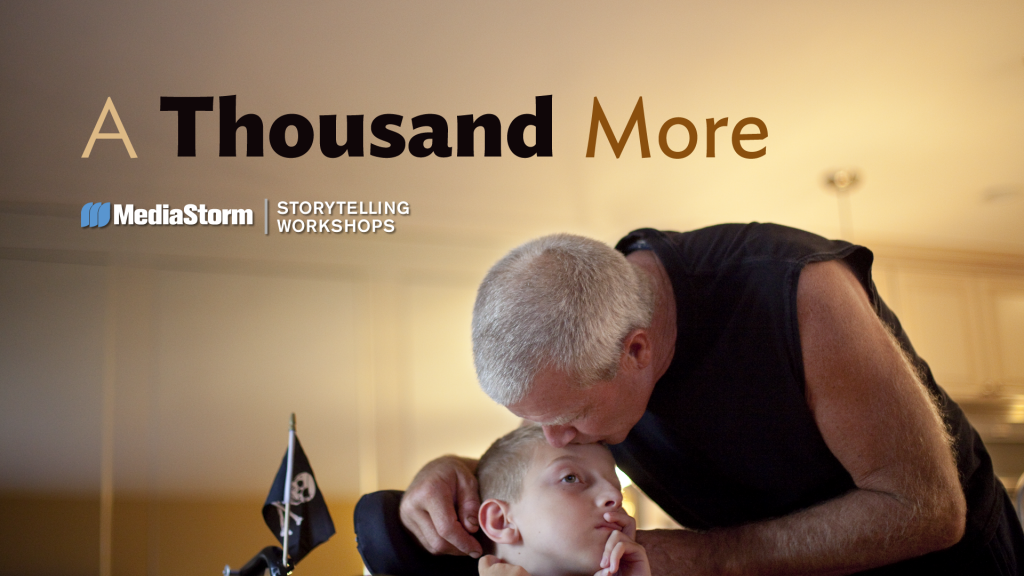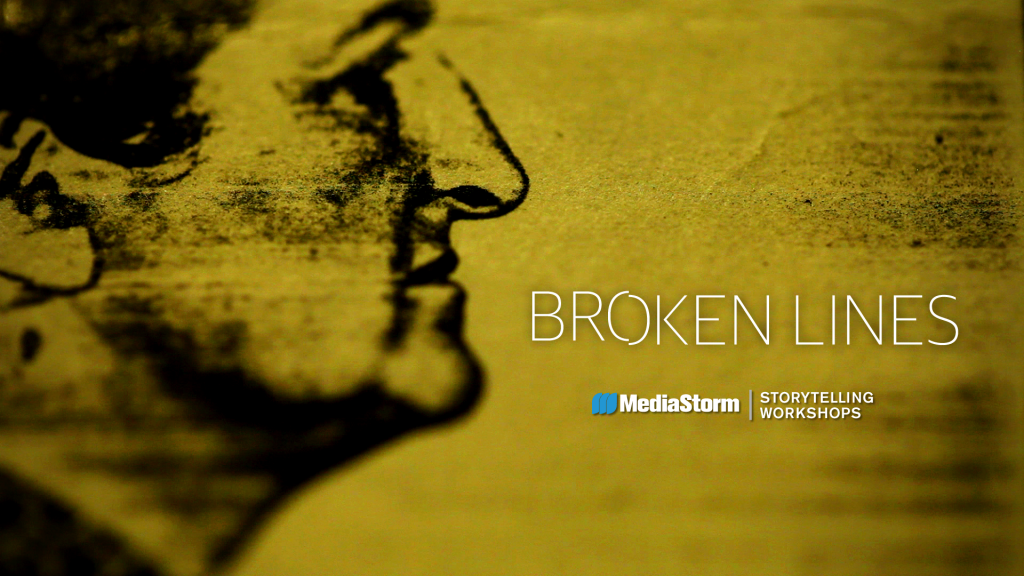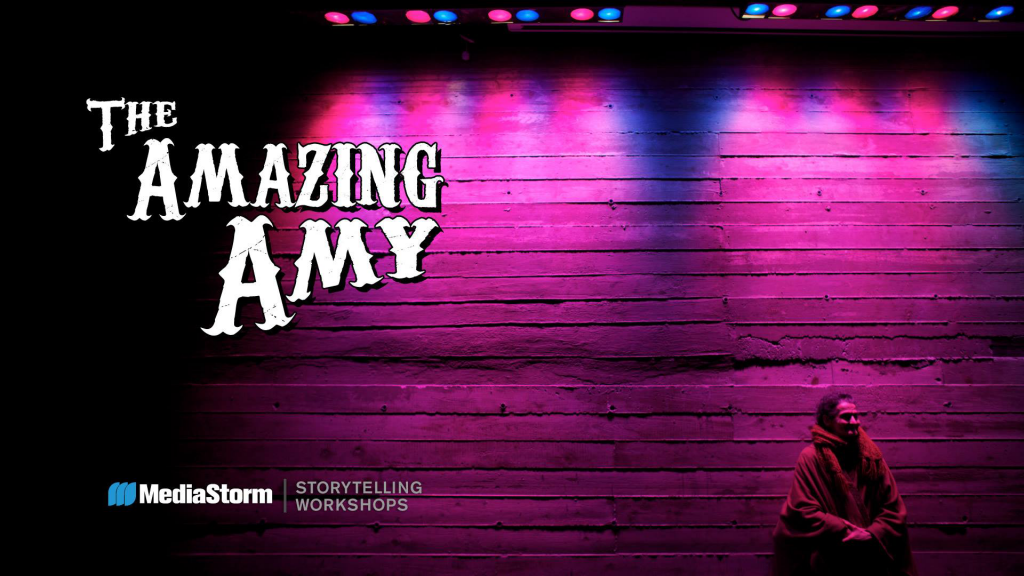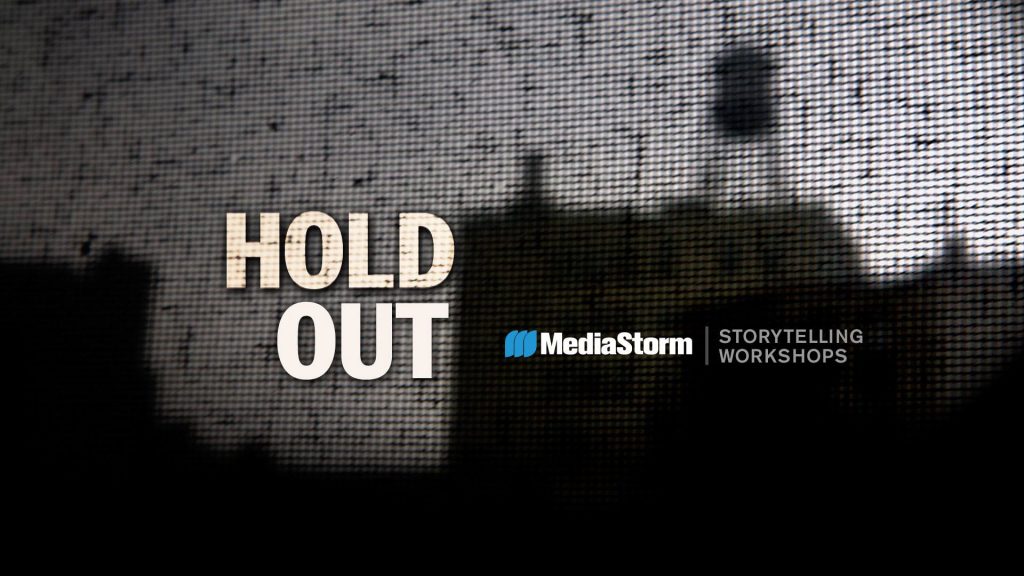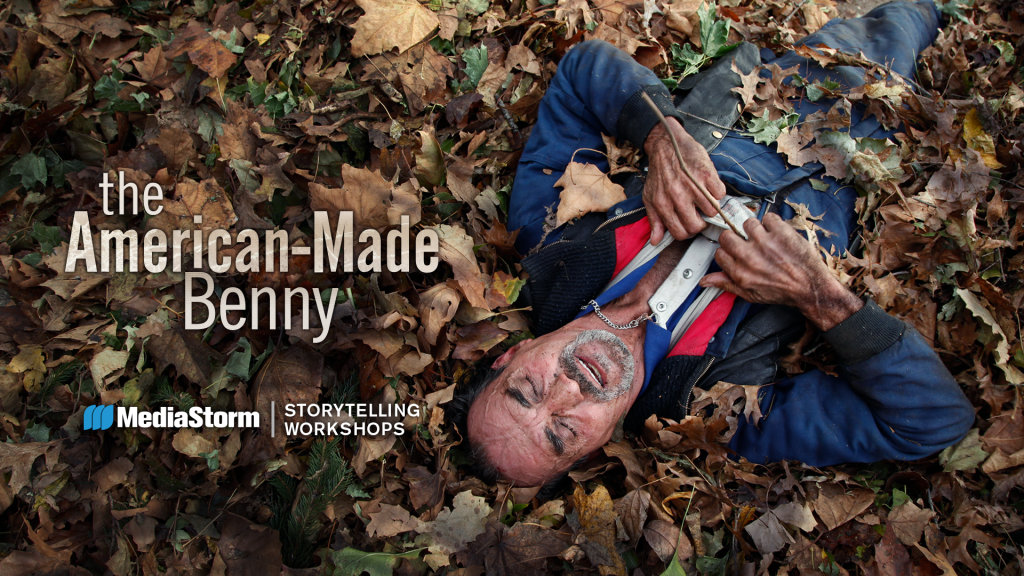Great stories come in all shapes and sizes, and there’s no follow-the-numbers chart for how to make one.
That said, after producing hundreds of films at MediaStorm, we’ve identified some common approaches that help make documentary stories more meaningful and powerful.
We developed this post for our upcoming Storytelling Workshop participants as they work to find a story to document.
As you look for stories, keep an eye out to see if they include one or more of the elements below.
Compelling Character
Great stories are often about people, and the best MediaStorm documentaries tend to focus on an individual person.
Narrowing in on a single subject allows filmmakers to explore in-depth that person’s challenges and solutions as they navigate an unique experience in a way that can be explored in a relatable human way.
Finding and exploring the motivations of a memorable and relatable character are key to making an impactful film.
An example of a MediaStorm Storytelling Workshop film that has a compelling central character is: Remember These Days
Universal Themes
Although everyone is different, we all experience common emotions and experiences. These are often referred to as universal themes about the human condition.
Identifying potential universal themes in a story and exploring them with the subject allows for viewers to relate to the subject’s experience and feel emotionally invested in their challenges and achievements.
Building empathy for the subject by framing the story around universal themes is not only a time-tested way to make it compelling, but it’s also a way to make it more timeless.
Documenting how a subject faces challenges we all experience in a unique way allows us to understand each other and the world we live in better.
Universal themes are concepts that resonate across audiences and are fundamental to human experience.
Some universal themes to keep an eye out for:
-
- Love
- Friendship
- Good confronting evil
- Coming of age
- Facing death
- Redemption or forgiveness
- And many others
An example of a MediaStorm Storytelling Workshop film that includes universal themes is: Take Care
Conflict or Overcoming Conflict
We all face conflict in our lives, and the best and most relatable stories often include characters who are confronting one or more of them.
A character could be facing an internal conflict, such as overcoming an emotional obstacle such as a harmful behavior or attachment.
Or they could be facing something external that is imposed on them, such as racism, violence or a disease.
Whatever the conflict, the challenge will lead them to growth and change, and this development adds depth to the overall story.
An example of a MediaStorm Storytelling Workshop film that focuses on conflict is: A Thousand More
Epiphany or Character Change
Ideally the main character will have experienced some sort of new realization or change after confronting a challenge.
The subject’s change often becomes the emotional core and serves as the apex of the film.
For that reason, identifying a character’s potential change is one of the most important things to consider when evaluating a story.
An example of a MediaStorm Workshop film that includes a character changing is: Broken Lines
Element of Surprise
The element of surprise is a powerful tool in storytelling because it sets up an emotional impact that allows the audience to be engaged more deeply due to the unexpected twist and provides a way to more deeply understand the motives and nature of the main character.
Often the surprise is centered around the conflict the character is facing, and they’ve either found an unexpected way to deal with it, or it’s revealed that the issue is more significant than the audience expects.
Surprise elements can be found in any part of the story as long as it serves the overall narrative.
When looking for a film topic and a way to tell it, if you can identify a plot element that can be presented with a surprise or a reveal, it will help the story be a more memorable one.
An example of a MediaStorm Storytelling Workshop film that includes and element of surprise is: The Amazing Amy
Narrative Arc
Good stories are most often presented in a systematic manner called a narrative arc.
When evaluating whether a story topic may be a good one, it’s helpful to consider how it may be told with such a structure.
The key factor to consider is whether the main character will experience some degree of change during the course of the story.
This change and the reasons for it will allow you to present a story using the common elements of a story arch. Those are:
Exposition: Where the characters, setting, and initial situation are introduced.
Inciting Incident: The circumstance that sets the story in motion is presented and is usually the reason for change and conflict.
Rising Action: The circumstances the main character faces build to the central conflict. They may face obstacles and choices, and confront challenges.
Climax: The story’s turning point where the conflict reaches its peak, which is the moment of greatest tension in the story and often involves a pivotal decision or confrontation.
Falling Action: Shows the consequences of the characters’ actions and decisions and the story begins to wind down.
Resolution: Closure to the story showing how the character resolved the conflict and how they changed as a result and can reflect on the story’s main themes.
Not every story needs each element to be successful, and it’s not important to be able to identify all of them when deciding the value of a story, but it’s helpful to know the structure of how the story will likely be presented so you can evaluate what might be possible.
If you’re able to imagine how the story might be told within the context of a structure, it will likely be a strong one.
An example of a MediaStorm Workshop film that includes a classic narrative arc is: Hold Out
Access
At MediaStorm we believe everyone has a story and meaningful experiences to share.
The most important issue when evaluating whether a story will work for the Storytelling Workshop is whether we have the necessary access to tell it.
The subject will need to allow us to shadow them for multiple days while documenting their lives in a way that results in something authentic to their experience. We don’t ask them to do things for us, but we will be in their lives for many hours and days at a time.
Additionally, sometimes you’ll have access to a single character but not to supporting characters in their lives who are critical to the story. This is something to keep in mind when deciding to embark upon a story.
An example of a MediaStorm Workshop film that includes a complex issues of access is The American-Made Benny
In this film we had unfettered access to Benny, but not to his wife who held a key perspective we were unable to tap. For an account of the challenges faced by the workshop team, see the accompanying essay Unanswered Questions.
Submit a Story Idea
MediaStorm’s goal is to tell the story of today’s world in an in-depth manner: From documentary, to personal essays to purely artistic.
Heartwarming to heartbreaking, these are timeless and intimate tales.
If you have an idea for a story that you think would be a good fit for our Storytelling Workshop, we’d love to hear from you.

